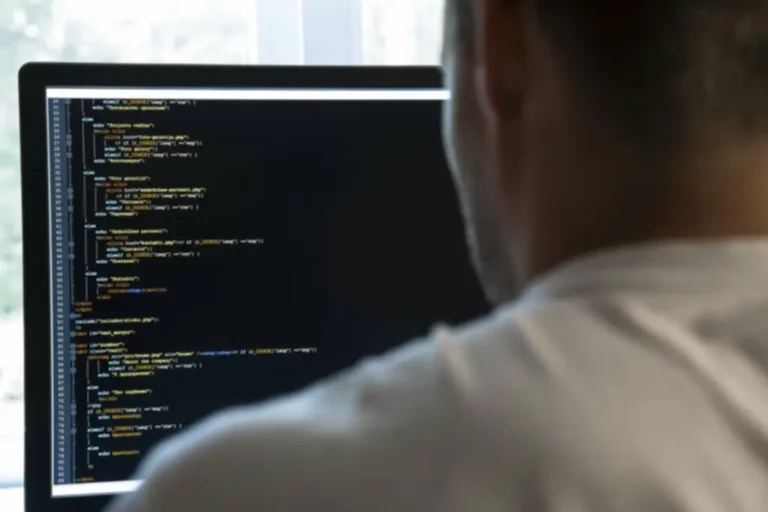Use role-based entry control (RBAC) to ensure group members solely have the access they completely need for their particular roles. To prevent unauthorized code modifications, arrange necessary code critiques, enable department safety rules, and use signed commits. The choice between them often is dependent upon project requirements, preferences for licensing, and the level of customization wanted in the CI/CD pipeline. This whole cycle can be automated with TeamCity, making it so that the software will get built, tested, and deployed automatically each time there’s a change within the supply code. In this blog, we will perceive what TeamCity is and explore why it’s important for anybody involved in software program growth. We may even be taught the easy steps to install TeamCity and understand the means it works.
Create your first project in TeamCity and configure and run your first build. JetBrains TeamCity is a powerful and user-friendly Continuous Integration and Deployment server that works out of the box. When there is a minimal of one finished dependent construct that already produced some artifacts, TeamCity can show them in a tree, so you’ll have the ability to select them in a helpful means. This article will present you the means to set up a CI/CD pipeline on your Android project using JetBrains TeamCity. Verify your compliance along with your native safety requirements and regulations, and update your controls based on the results of your assessments.
Group Instruments
As with any software, there are execs and cons, so we will look into the advantages and disadvantages of using TeamCity. When you run any build from a series, whether it’s the final one or medium one, TeamCity gathers all the opposite chained builds into a sequence, according to their dependencies. As you noticed on our pattern chain’s scheme, TodoImage always runs after TodoApp; Test1 and Test2 start solely after TodoImage finishes and run in parallel to one another. In particular circumstances, you can create a sequence where revision synchronization is disabled.

The Method To Build A Ci/cd Pipeline For Android Initiatives
TeamCity is a continuous integration (CI) and steady deployment (CD) server developed by JetBrains. It helps improvement groups automate the method of building, testing, and deploying their functions. It also allows for quicker suggestions, enabling teams to catch and fix bugs earlier within the improvement lifecycle.
- A construct configuration is a set of instructions on how to build a project, together with compiling supply code, operating exams, and packaging the Microsoft Azure Portal.
- Notably, TeamCity can carry out these tasks using various build brokers, which are basically machines devoted to overseeing these builds.
- The most popular kind of trigger is a VCS trigger, and that is the trigger we’ll use in this tutorial.
- Whether Or Not for small groups or enterprise-level initiatives, TeamCity enhances productiveness by streamlining growth workflows and lowering handbook intervention.
- At this level, the primary two builds are already chained together, and you’ll run your first chain.
Building And Deploying Microservices With Spring Boot And Teamcity
Every construct agent plays a pivotal function, guaranteeing swift and correct project construction, testing, and deployment. This parallel processing considerably enhances the event pipeline’s velocity and efficiency. TeamCity is a strong Continuous Integration and Continuous Deployment (CI/CD) server developed by JetBrains.
Harden your build servers by removing pointless services, keeping systems patched, and utilizing minimal base images. Implement community segmentation to isolate build environments from one another and other systems. Make security testing a natural part of your pipeline by putting multiple testing layers in place.
In today’s software program growth setting, guaranteeing the standard and functionality of functions is paramount. Continuous Integration (CI) and Continuous Supply (CD) tools play a crucial function in automating growth and deployment processes. TeamCity, developed by JetBrains, is one of the hottest and widely adopted CI/CD instruments in the business.
At its core, TeamCity provides build administration capabilities, which allows customers to outline construct configurations for his or her tasks. A construct configuration is a set of directions on how to construct a project, including compiling supply code, working checks, and packaging the Microsoft Azure Portal. TeamCity can handle multiple build configurations and set off builds whenever code is checked into the model control system. Being a industrial software, it is licensed under a freemium license (up to 100 build configurations and three build agents).
In this tutorial, you’ll learn to create a microservice utilizing Spring Boot, set up a CI/CD pipeline with JetBrains TeamCity, and automate deployment utilizing Docker. Establish vulnerability thresholds (what stage is considered suspicious or a threat) and automatically stop deployments that don’t meet your security standards. Schedule common scans of your artifacts to make sure you’re conscious of new Product Operating Model or emerging vulnerabilities. Configure these checks to run routinely with every build and block deployments if any safety issues are found. With extra entry points and less time to catch potential threats, each commit, build, and deployment is another alternative for something to go mistaken.
We can add triggers in each test builds, however TeamCity supplies a extra simple choice — creating an additional composite construct, that’s TestReport. A composite build can run without an agent and accumulate outcomes of the previous builds in a sequence. Moreover, it’s going to aggregate and report the outcomes of Test1 and Test2 in a single place. For instance, let’s exclude Dockerfile from the checkout scope of TodoApp.
It prioritizes keeping your code protected from the very begin, is built in quite than a separate phase, and is integral to DevSecOps. It can even contain multiple groups working from different places around the world. Nonetheless, while pace and collaboration may be nice for developers and companies, they’ll additionally create safety challenges.
Its UI is considered better than Jenkins and it presents distinctive options like build history, build chain instruments, supply management. For extra particulars, try our complete review of Jenkins vs Teamcity. Monitor all actions and look ahead to unusual patterns like builds at odd hours, surprising configuration adjustments, unusual useful resource utilization, and deployment occasions. It permits developers to integrate, code, and is less complicated to configure with simple steps. On TeamCity parallel builds run concurrently on different platforms and environments.

We may also explore its benefits and why it stands out in the competitive panorama of CI/CD tools. TeamCity is a Continuous Integration and Continuous Deployment (CI/CD) software developed by JetBrains. It’s designed to streamline the software growth course of by automating duties like constructing, testing, and deploying code adjustments.
Optimizing Performance- As you add more build configurations, it’s essential to observe and optimize the efficiency of your TeamCity server and brokers. This would possibly contain balancing loads what is teamcity throughout multiple agents, cleansing up old build data, or scaling your infrastructure to fulfill demand. TeamCity is a industrial software versus Jenkins which is open source.

コメントする